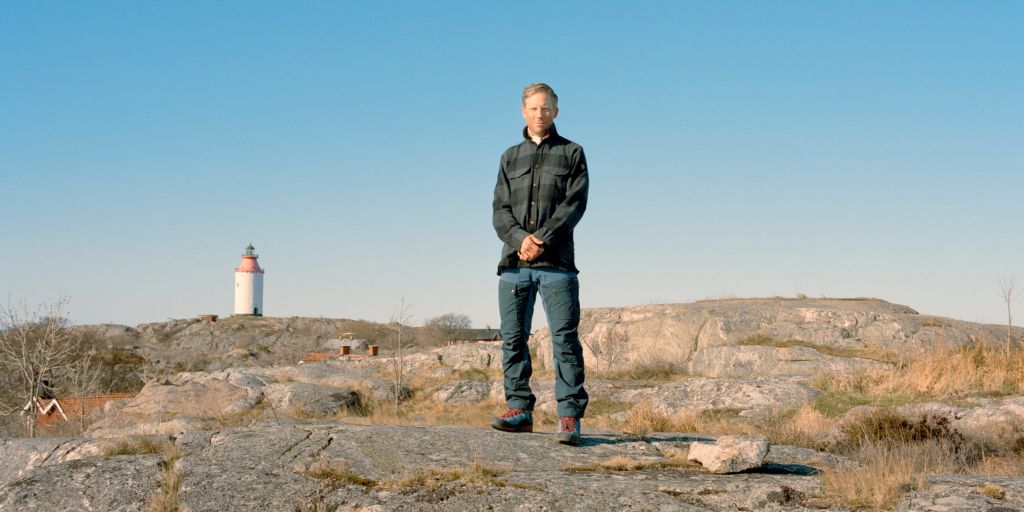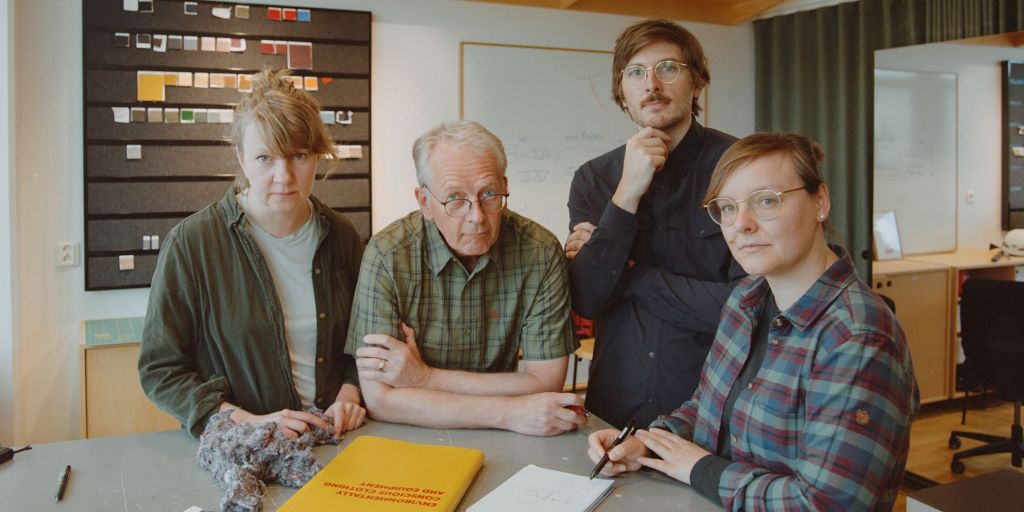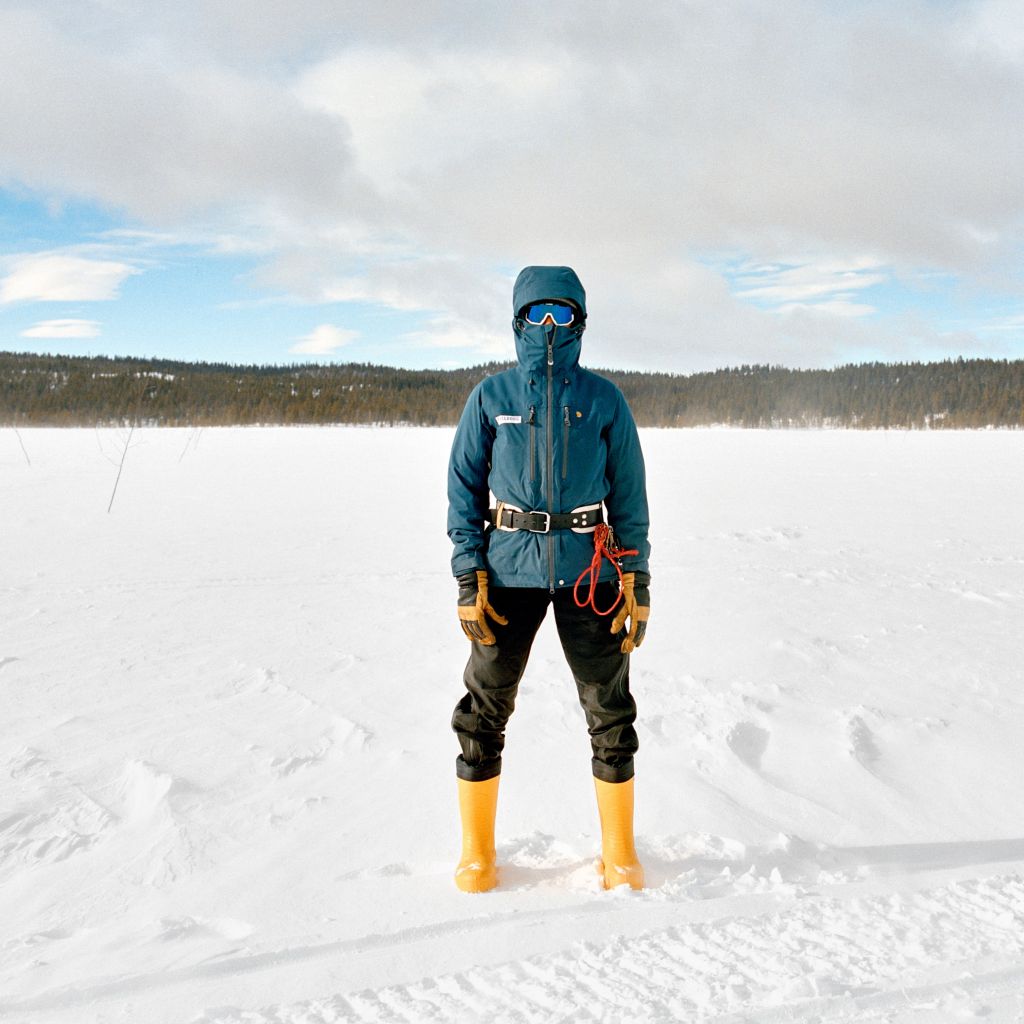Our long and ongoing battle against PFCs
In just a few years’ time, PFCs (per- and polyfluorinated chemicals) are expected to be banned in both California and the EU. For us at Fjällräven, battling PFCs is nothing new. The brand has worked to eliminate hazardous chemicals from production over the last 15 years. It’s a tough job, with setbacks, successes and even more setbacks along the way. But the focus has stayed the same: Keep working at it. For the sake of the environment.
Words: Karin Wallén
Donna Bruns remembers the day that everything changed. It was in April of 2008. The Fjällräven team had just had their annual meeting with the internationally renowned chemist Stefan Posner and, as usual, he had presented the latest research on chemicals in the clothing industry in general and the outdoor clothing industry in particular.
But the meeting came to focus on one thing. Something that had been used as an efficient solution to everything from water repellence to making material more comfortable. It was all about fluorocarbons. Also known as PFCs time but was now beginning to better understand. PFCs remaining on the surface, keeping both garment and wearer dry, was what everyone wanted. By adding the chemicals to the membrane, you could create thin yet breathable garments. But at what cost?
Stefan Posner talked about how PFCs had been found in everything from copepods to human foetuses. They were found in penguins in Antarctica and polar bears in the Arctic. And studies in animals showed that the chemicals could affect, among other things, the immune system, the liver, and the hormonal system. There were also suspicions that it could affect the reproductive system in mammals and cause cancer.

I realised they were in my couch, in my frying pan, even in the tap water I drank.
Martin Axelhed
Fjällräven’s CEO
A wakeup call
“It was a wakeup call for all of us. Not only did we now know how toxic these chemicals were to both animals and humans, but they were also already everywhere, and their breakdown was so slow that you couldn’t see it happening in a foreseeable future. These were ‘forever-chemicals’”, says Donna Bruns, Global Product Director at Fjällräven.
Even if Fjällräven at the time didn’t have any major collections of shell garments, it was still used in some parts of its production and in the impregnation agents used.
“Our eyes were opened. Was this something we wanted to use? It was such a ground-breaking issue for us. It was about who we were and who we wanted to be as a brand. Without nature, we’re nothing,” says Donna, and continues:
“For me it was a no-brainer, and thankfully our CEO Martin Axelhed felt the same.”
Fjällräven says No to PFCs
Axelhed was especially stunned to hear about the incredible spread of the PFCs. They were, literally, everywhere. And a ban wasn’t even on the table yet.
“I realised they were in my couch, in my frying pan, even in the tap water I drank. This isn’t something we want to contribute to. Our objective needs to be to listen to research findings and not just abide by the law. We need to be better than that,” says Axelhed.
The board decided to phase out PFCs from every garment and product made by Fjällräven. The brand also looked at other additives and chemicals that in any way affected function without really being necessary. At this time, a lot of extra chemical agents were used to enhance garment performance, for everything from insect repellence to sun protection. There were anti-tick, anti-odour, anti-dirt chemicals and a bunch of others that simply gave a material a different texture, without having to produce it in an often more expensive and better constructed fabric.
2009: The challenging journey begins
Fjällräven’s decision meant no unnecessary chemical components would be used from there on. Martin admits that the brand turned down a lot of business because of this.
“It was commercially challenging to go in a completely different direction when everyone else carried on as usual. We had to convince all our suppliers to change, while also having to be transparent in how we could no longer offer the same functionality as the other brands that were still using fluorocarbons. Still, the decision was easy.”
Fjällräven had already cut ties with the biggest membrane supplier in the industry, and started developing its own shell membrane, without PFCs. At a time when phasing out PFCs wasn’t on the radar for many companies, Fjällräven had to work hard to see its vision through.
“Suppliers will listen to strong brands with a vision, but it takes time. It’s a commercial question for them too, of course - it can take years for the factories to adapt. It’s been a frustrating process,” says Axelhed.
Fjällräven maintained a continuous dialogue with suppliers while navigating the jungle of challenges ahead. Chemicals, fabrics, construction and impregnation had to fit together for the most satisfactory result possible, with the smallest possible environmental impact. But this would mean that the end consumer had to impregnate their garment more often, using a PFC-free product, to maintain the water-resistant properties. The prototypes were tested both in the laboratory and in the field, finally resulting in a finished product.

It’s like Pandora’s box. The more boxes you open the more crap comes flying out.
Donna Bruns
Fjällräven’s Global Product Director
2012: Developing a shell fabric without PFCs
The first collection of shell garments produced completely without PFCs was launched by Fjällräven in 2012, named Eco-Shell. To put it bluntly, this product was never going to be the best on the market when it came to keeping hikers dry in the pouring rain. But it did its best, without adding even more per- and polyfluorinated chemicals into the environment, long before legislators had thought of banning them. So yes, there were reasons to celebrate. But the joy would be short-lived.
Donna Bruns looks back at the time after Eco-Shell’s launch with mixed feelings. On one hand it was a long-awaited success, an innovative product that finally felt ready for the market. But then came the backlash. Fjällräven had poured its heart and soul into creating the new Eco-Shell membrane completely without the use of PFCs, when it was discovered that one of the suppliers still used the agent in its production process.
“We had been so clear with our ambition and yet someone messed up. We had to recall every single product. It was tough. Even from a sustainability angle. Were we supposed to destroy the garments now? No matter what we did, the chemicals wouldn’t go away,” says Bruns. “It’s like Pandora’s box. The more boxes you open the more crap comes flying out. Every time we thought our work was done, we realised that actually, no it’s not. And Pandora’s box kept delivering unwanted surprises.”

When experts say that fluorochemicals are volatile agents, they’re certainly not exaggerating.
Aiko Bode
Fjällräven’s Chief Sustainability Officer (and team)
2012: Cross contamination setback
Right before Eco-Shell was introduced to the world, Aiko Bode stepped into his new role as Sustainability Manager at Fjällräven. His first year was turbulent to say the least. After the first Eco-Shell setback had been dealt with, reports started appearing that indicated something completely different to what Fjällräven had promised. After years of carefully developing a shell garment without the use of PFCs, Greenpeace had still found fluorochemicals in several of the outdoor brand’s garments. “Greenpeace were surprised. And so were we,” says Bode.
This would be the first hard lesson learned when it comes to cross-contamination. When experts say that fluorochemicals are volatile agents, they’re certainly not exaggerating.
“It was found that our collections had been hanging in the same room as products that did contain fluorochemicals and that was enough for the chemicals to transfer to our garments. We had to completely reorganise production and ensure everything was clearly separated. Contamination was everywhere,” says Bode.
After just two years, in 2014, Greenpeace representatives were impressed by the notable difference and appreciated how open Fjällräven had been with the process.
But there was still work to be done. And the road ahead would yet again be tougher than expected.
There seems to be no stopping the volatile chemicals that Fjällräven had worked so hard to eliminate. If a Fjällräven jacket was hung next to the ski wax shelf in a shop, PFCs would be found in the jacket as well. Contamination was everywhere and the factories were beating their heads against the wall - no matter how much they tried to separate production, the chemicals would find a way in. It was later found that the industrial water in the factory was reused and came from other producers that were contaminating Fjällräven’s products. A fundamental overhaul was needed to stop the spread.
2015: PFCs successfully phased out from all Fjällräven fabrics
In 2015, Fjällräven was finally able to say that they had phased out PFCs, not just from its shell garments but also from tents, backpacks, and accessories. There was just one thing left. And it would prove to be both a minor detail and a huge issue - the zippers.
2023: Zippers without PFCs available
After many challenges along the way, YKK, the world leader in waterproof zippers, was finally able to unveil a zipper produced without PFCs. The year was 2023, and the wait was finally over.
2023: Issues with new zippers
“We were just getting ready to once again say ‘yes, we’re there’ until we found out that all the painted zips still had PFCs in them. It was in the paint,” Bruns says with a sigh.
“It’s like there’s no end to it. This isn’t a success story. Not yet. It’s hard, continuous work. We’re constantly on the lookout for when and where it will pop up again.”
Today: Science does not have all the answers yet
Researchers believe they’ve located roughly 80% of fluorochemicals’ areas of application, while 20% are yet to be found. They can be anywhere.
“It worries me, since we never know where to find them next,” says Bode.
They’re most often used for water and grease repellence, but there are other properties that could make the chemical an attractive prospect.
Various certifications have since been created for brands to show that their materials are PFC-free. So why hasn’t Fjällräven simply applied to use one of them rather than creating their own material?
“In our minds, there is no reliable certification out there today. The problem is that they don’t tell you how it’s tested. And they often just test for one certain type of chemical, when there are so many others that are just as bad,” says Bode.
Fjällräven’s own material & chemical expert, Felix Aejmelaeus-Lindström, agrees.
“PFCs are a major group of chemicals. We have around 10,000 known agents, and probably a lot more that we don’t know about yet,” says Aejmelaeus-Lindström.
He’s been a long-term part of Fjällräven’s journey to eliminate PFCs you’ve made it, then suddenly realize you missed another detail.
“In the textile industry, you have more than just the fluorochemicals you actively add to a product, it could be in a certain oil for the sewing machine to enable more efficient production, or in oils used to spin yarns. Or in the colours. Or anywhere.”
Another challenge is the communication throughout the chain of suppliers.
“When you talk to chemical suppliers who work with a certain recipe, they’re often quite reluctant to share it. It’s a business secret. Unfortunately, there’s very little transparency there,” says Aejmelaeus-Lindström.

Scientists have found around 10,000 agents, and there are probably a lot more that we don’t know about yet.
Felix Aejmelaeus-Lindström
Fjällräven’s Material & Chemical Expert
Users need to rethink too
One of the biggest challenges is to communicate what the options are.
“The problem is that fluorochemicals are so effective. Spray them on a jacket and it becomes water repellent. Spray them on a T-shirt and you don’t have to worry about stains from sweat or deodorant. Impregnate a table with them and it becomes super easy to wipe clean.”
So, what happens without them? Well, your gear will require a little more TLC. You’re going to have to waterproof that jacket more frequently and accept certain stains. You might have to see them as personality and character, rather than flaws and faults.
“Personally, I enjoy taking care of my gear. It creates a different bond; you get to know it in a different way. And the more you care for it the longer it will last.”
2025-26: Legislation is banning PFCs in EU and US
It will be interesting to see what the future holds for the industry now that legislation is finally catching up. The ban on fluorochemicals is supposed to become effective in California by 1 January 2025, followed by the EU later in 2025 or 2026.
For Fjällräven, already very familiar with the challenges, the upcoming ban doesn’t really affect the company internally, but is strongly welcomed as it will help other brands to make the same shift. Hopefully it will also make it easier to communicate the need to suppliers.
“We have learned so much about testing and validating, and just how thorough you need to be. A certificate is just paper, you need to follow up constantly,” says Fjällräven CEO Martin Axelhed. He is proud of Fjällräven’s journey and how far it has come, not just when it comes to PFCs. “Our chemical strategy is generally very strict and conservative. We want our products to leave as small a footprint as possible.”
The right signal to the industry
Reducing fluorochemicals on our planet will take time. A very long time. But regardless of how long it takes and how much technical development is needed to completely eliminate them, it’s the right signal to send to the industry, says Sustainability Manager Aiko Bode.
“If in the future we can limit consumption to only where it’s really needed, that would be a huge success. If it’s needed in bypass surgery after a heart attack that’s certainly a different case than in products where it’s an unnecessary component,” he says.
PFCs are widely used in medical care, as components in cancer medicine and knee prosthetics, and have few alternatives. This area will most likely be an exception from legislation for the same reason. But there are other sectors aside from the outdoor industry that are affected. Transport, electronics, packaging, pesticides, and many more will be impacted by this legislation.
“We did the bulk of our work a decade ago, so we don’t need to invest as much time now. This has been with us over the years, and we have learned a lot,” says Bode.
Donna Bruns believes that Fjällräven has had a big impact on suppliers and helped them make the shift, thanks to the early measures taken against PFCs.
“We made it possible for non-PFC waterproofing treatment to reach the Japanese market, for example, by helping our local suppliers with imports since it was brand new for them.” Thinking of how the industry has evolved since, it’s clear we’ve come a long way, but still have work to do. “In the past, a brand could sit back and just produce efficient products. That’s not enough today. You need to be a chemist, an engineer, and a creative director at once. The company needs many more skills than previously,” says Bruns.
The battle against PFCs continues
So, will we ever be able to claim that Fjällräven has completely eliminated PFCs? It’s all in the details. What’s still to be worked on is the issue with the zippers. It turns out that the PFCs are hard to eliminate from the colour used in production.
“We can say that as far as we know, our products are produced without PFCs today. We have reliable documentation from our producers and suppliers, but we still do our own testing,” says Bruns.
She says it’s evident that Fjällräven’s founder Åke Nordin has played a big role in inspiring the tremendous work the company has done and never giving up has been a core principle since day one. “I remember he told me many years ago, ‘Whatever you do, Donna, you’re going to have to work hard for it. Just do it.’”
Even if the goal of completely eliminating PFCs hasn’t quite been met yet, Fjällräven has certainly come a long way, while other brands are at the start of the same journey.
“We can sleep well at night knowing that we never did this for PR, or due to legislation. We just did what we believe in,” Bruns concludes.

